#ScienceGIF #Science #GIF #LunarEclipse #SuperMoon #BloodMoon #Moon #Lunar #PlanetaryDynamics View Original Post on Google+
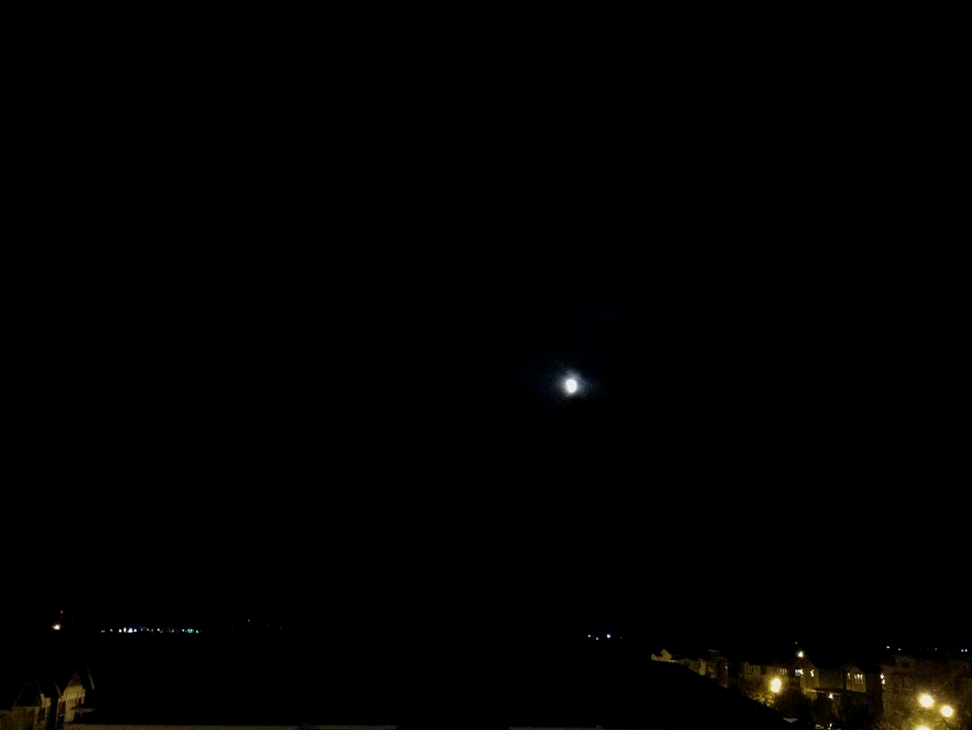

'Science GIFs' was one of the largest and most active science-oriented collections on the Google+ social network with over 325,000 followers at the time of its shutting down. This website serves as a backup of the content from the collection.
#ScienceGIF #Science #GIF #LunarEclipse #SuperMoon #BloodMoon #Moon #Lunar #PlanetaryDynamics View Original Post on Google+

Caesium (Cs) is a soft, silvery-gold alkali metal that reacts violently when exposed to water. The reaction is extremely exothermic and produces caesium hydroxide (CsOH) and hydrogen gas (H2). The reaction occurs so quickly that it will often shatter its container, as seen by the enormous force warping the walls of this plexiglass box.
The caesium is initially contained in a glass vial that is shattered by the metal rod to expose it to the water.
Source: https://youtu.be/b2YrZNahqiw
#ScienceGIF #Science #GIF #Caesium #Water #Reaction #ChemicalReaction #Exothermic #TestTube #Hydrogen View Original Post on Google+
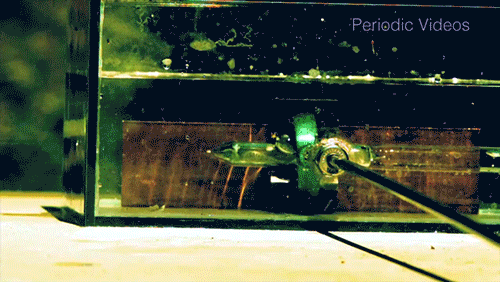
NASA’s New Horizons spacecraft continues to transmit high resolution imagery back to Earth following its July 14, 2015, flyby of Pluto. This flyby was created by stitching together images from the LORRI (Long Range Reconnaissance Imager) and rendering them on a sphere. The flyby begins with a low-altitude look at Norgay Montes (informal), then flies northward over the boundary between Sputnik Planum (informal) and Cthulhu Regio (informal), before turning and drifting slowly east. The highest resolution images acquired thus far have a resolution of 400 m/pixel.
Source: http://blogs.nasa.gov/pluto/2015/09/18/art-meets-science-in-new-pluto-aerial-tour/ (NASA)
#ScienceGIF #Science #GIF #NASA #NewHorizons #Pluto #Flyby #Space #Planet #DwarfPlanet #FlyOver #Render #Photographs #OuterSpace #Discovery #Exploration #Mountains View Original Post on Google+

Luminol is a chemical that exhibits a striking blue chemiluminescence when mixed with an oxidizing agent. In this example, a solution of luminol, sodium hydroxide, and water is mixed with a solution of potassium ferricyanide, hydrogen peroxide, and water. The potassium ferricyanide acts as a catalyst to produce molecular oxygen from the hydrogen peroxide, which then oxidizes the luminol. Light is given off as a byproduct of the oxidation.
Luminol is most commonly used in forensic investigations to detect trace amounts of blood left at crime scenes. It reacts with the iron found in red blood cells to catalyze its brilliant blue glow.
Source: https://youtu.be/xlO1awr3-9E
#ScienceGIF #Science #GIF #Luminol #Chemical #Chemiluminescence #Reaction #Oxidizing #Oxidizer #Chemistry #Glow View Original Post on Google+
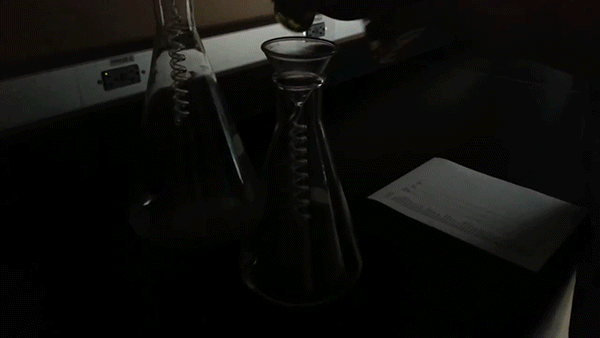
This close-up of a jellyfish tentacle shows its stinger mechanism in action. When a small voltage is applied to the tentacle under the microscope, it triggers the firing of cnidocytes (nematocytes). A cnidocyte is an explosive cell containing one large secretory organelle filled with venom and a long hollow tubule. Upon firing, the hollow tubule is pushed outwards and penetrates into the prey/predator, where it delivers its toxic payload. Normally the firing of the cnidocyte is completely involuntary and happens simply from contact with the tentacle.
Source: https://youtu.be/7WJCnC5ebf4
#ScienceGIF #Science #GIF #Jellyfish #Microscope #Biology #Nematocyst #SlowMotion #Voltage #Tentacle #Venom #Stinger #Cnidocyte View Original Post on Google+
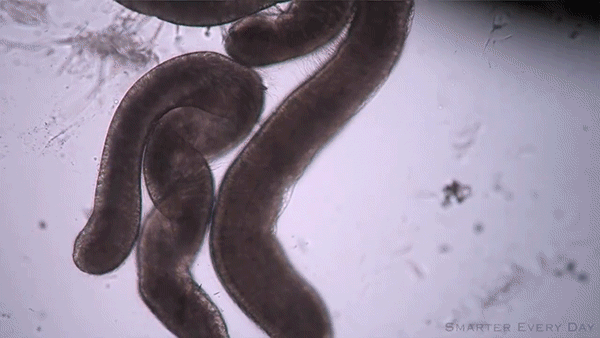
Unlike conventional light microscopes, electron microscopes use an accelerated beam of electrons as the source of illumination. Because the wavelength of an electron is up to 100,000x shorter than that of a visible light photon, electron microscopes can resolve much smaller objects. While most conventional light microscopes are limited to around 2,000x magnification and ~200nm resolution, transmission electron microscopes can achieve up to 10,000,000x magnification and resolve objects as small as 50 picometers!
A scanning electron microscope was used to image the interaction of a vinyl LP with the needle of a record player. The irregularities in each groove of the vinyl represents the audio waveform for both the left and right channels of stereo audio. As the needle moves down the path, the minor deflections are converted into electrical signals and output to a speaker. Each groove is roughly 80µm wide and ranges between 35-40µm in depth.
Source: https://youtu.be/GuCdsyCWmt8
#ScienceGIF #Science #GIF #ElectronMicroscope #Electron #Microscope #Microscopic #Imaging #Music #Audio #Microscopy #Vinyl #LP #Record View Original Post on Google+
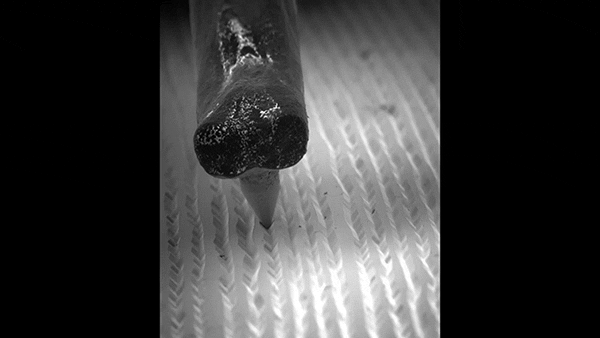
This is a slow motion perspective view of a water droplet vaporized in hot oil. Upon contact with the bottom of the heating vessel, the water expands rapidly as it shifts from the liquid to gaseous state. This rapid increase in volume causes the bubble to over-expand relative to the pressure of the surrounding oil. The higher pressure oil collapses the water bubble, which then re-expands and starts a cycle of expansions and contractions. The non-uniform surface of the bubble is the result of the Rayleigh-Taylor instability that exists at the water-oil interface because of their different densities.
The rapid expansion of the water as it transitions from the liquid to gas state is why ** you should never try to put out an oil fire with water!**
Source: https://youtu.be/gltxUjB8jNA
#ScienceGIF #Science #GIF #Water #Oil #Hot #Heating #Transition #Matter #State #Vaporization #Gas #Liquid #Bubble View Original Post on Google+

A material is hydrophobic when it repels water (hydrophobia = fear of water) and tends to be comprised of non-polar molecules. Since water (H2O) is a polar solvent, it does not readily interact with non-polar molecules. The beading of the colored water on the hydrophobic surface is the result of the hydrophobic effect that causes the water to minimize its contact surface area by forming spheres.
A super hydrophobic material like the one shown here forms droplets that have a contact angle greater than 160° and readily slide off the surface.
Source: https://youtu.be/i3jA40arq9Y (The Slow Mo Guys)
#ScienceGIF #Science #GIF #Hydrophobic #Water #Repellent #GE #Slow #SlowMo #SlowMotion View Original Post on Google+
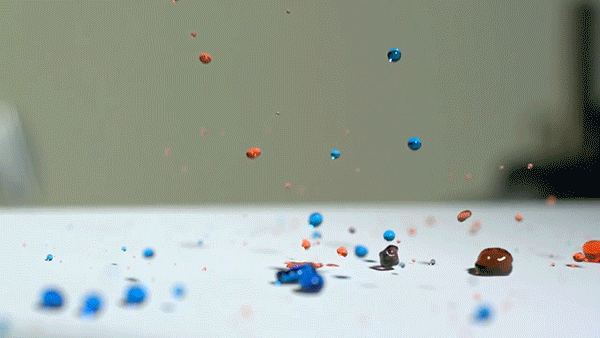
A tuning fork is an acoustic resonator that vibrates at a specific pitch after being struck on a surface. Tuning forks emit a pure musical tone and were used to tune musical instruments (as its name suggests). As the vibrating tuning fork breaks the surface of the water, it sends droplets spraying everywhere.
Fun Fact: The quartz crystal that serves as the timekeeping element in many watches is actually a tiny tuning fork that vibrates at a frequency of 32,768Hz.
Source: https://youtu.be/VCERs0v1OoI (The Slow Mo Guys)
#ScienceGIF #Science #GIF #TuningFork #TheSlowMoGuys #SlowMotion #Water #Splash #Vibration #Resonance #Liquid #HighSpeed #FPS View Original Post on Google+
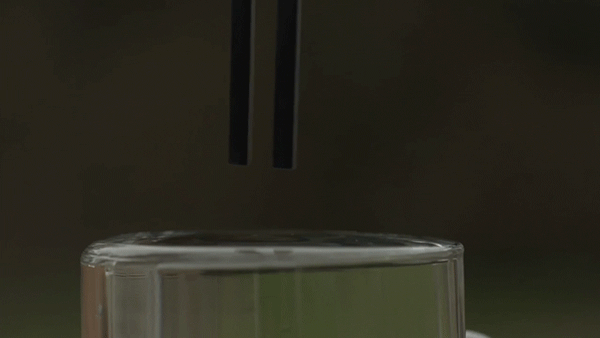
The basilisk, also called the Jesus Lizard, is capable of running across the surface of water for brief distances. Found in Central and South American rainforests near rivers, it uses this technique to find prey and escape predators. Its large hind feet have scaly fringes that extend outwards to increase surface area and allow the lizard to dart up to 20m without sinking.
Source: https://youtu.be/WpXHpXKZtws
#ScienceGIF #Science #GIF #Basilisk #JesusChristLizard #JesusLizard #Water #Momentum #SurfaceArea #Nature #Biology #Lizard View Original Post on Google+
